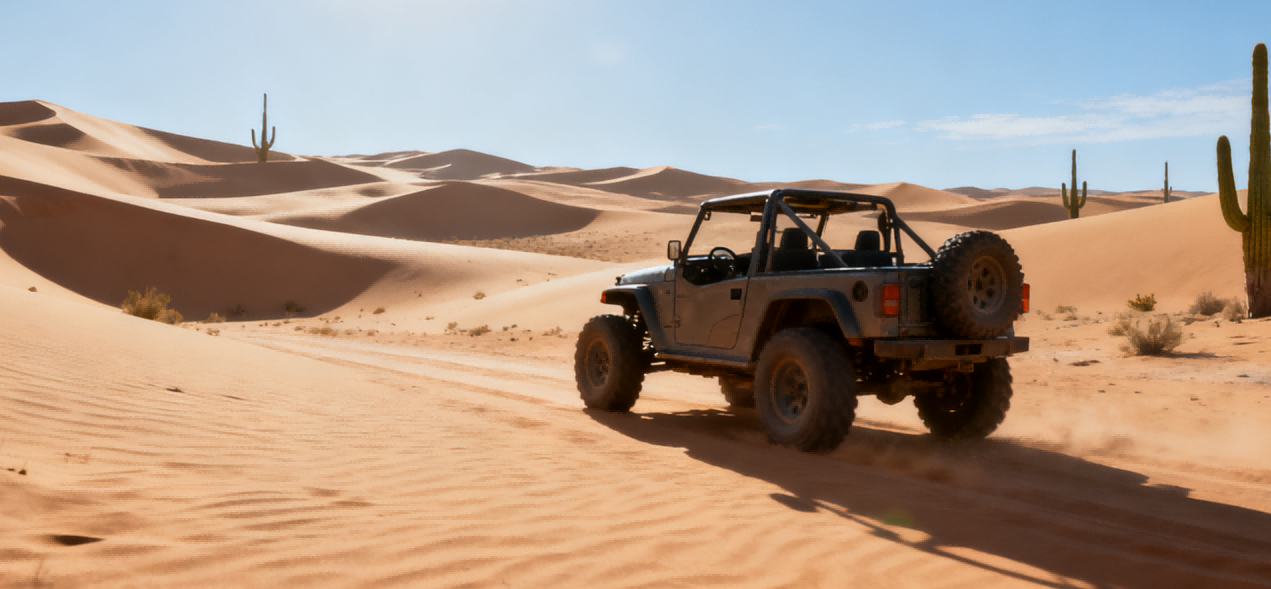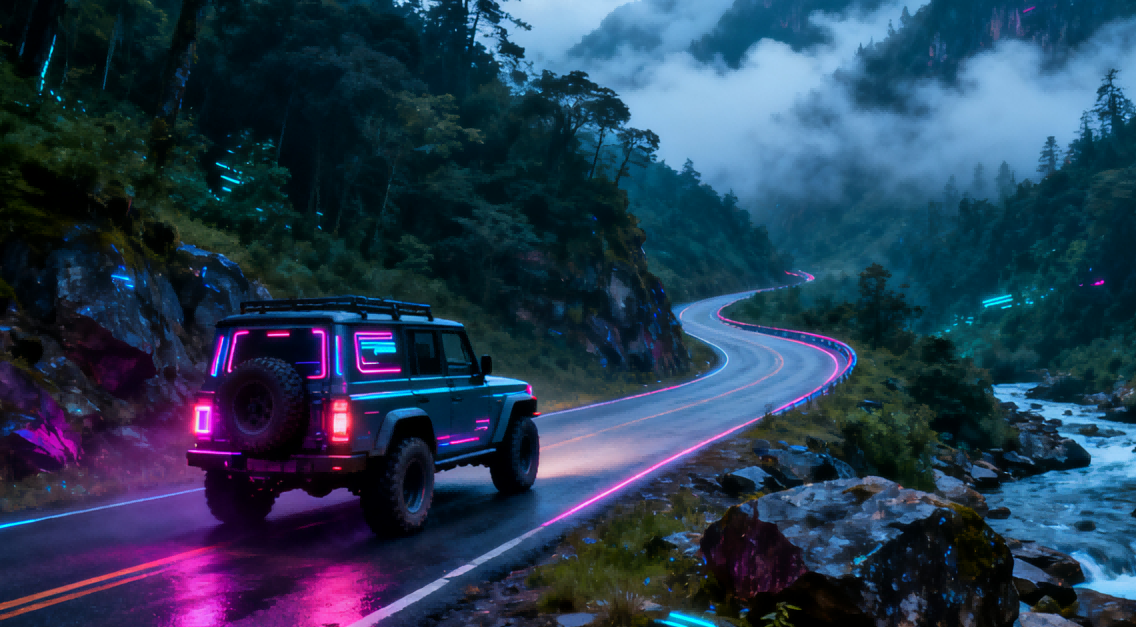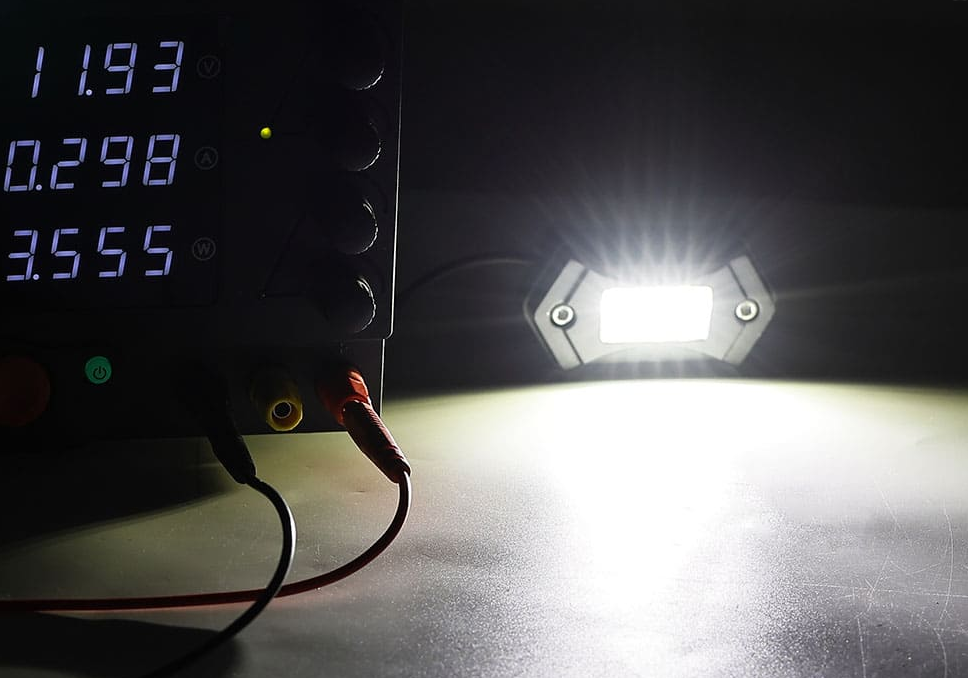The Art of Off-Road Lighting: How Rock Lights Can Showcase Your Vehicle’s Personality
- Part 1: From Function to Form - The Evolutionary Journey of Rock Lights
- The Utilitarian Origins
- The Technological Catalyst: The LED Revolution
- Part 2: The Anatomy of a Modern Rock Light System
- 1. The Light Pods Themselves
- 2. The Control Hub / Brain
- 3. The Controller
- 4. Connectivity and Wiring
- Part 3: The Installation Canvas - Strategic Placement for Maximum Effect
- The Functional Foundation
- The Artistic Flourish
- Part 4: The Color of Your Character - Psychology and Application
- Part 5: The Technical Deep Dive - What to Look For When Buying
- Part 6: The Cultural Impact - Rock Lights as a Social Glue
- Conclusion: More Than Just Lights - A Declaration of Identity
For decades, the off-road community has been defined by a spirit of rugged individualism and mechanical ingenuity. We lift our trucks, equip them with gnarly tires, and armor them with steel plates, all in the name of capability. But in recent years, a quiet revolution has been illuminating the trails and the aftermarket scene—a revolution not just of function, but of pure, unadulterated form. This is the era of rock lights, and they have transformed our vehicles from mere tools of adventure into dynamic canvases for personal expression.
Once a simple, utilitarian accessory for spotting obstacles underneath the chassis, rock lights have evolved into a sophisticated lighting category that blends cutting-edge technology with artistic flair. They are no longer just about seeing; they are about being seen. They are the highlight of a campsite, the showstopper at a meet, and the signature glow that makes your 4x4 unmistakably yours. This is the art of off-road lighting, and it’s a science worth mastering.
We are BLIAUTO, and we will walk you through the content about Rock Lights.
Part 1: From Function to Form - The Evolutionary Journey of Rock Lights
To appreciate the artistry of modern rock lights, we must first understand their humble, practical beginnings.
The Utilitarian Origins
The concept of "rock lights" originated in the hardcore rock-crawling scene. When navigating treacherous, boulder-strewn trails at night, a driver’s field of vision is severely limited. Headlights, fog lights, and even roof-mounted light bars illuminate what’s ahead, but they create deep, black shadows directly underneath the vehicle. This is the dreaded "void"—a space where a crucial tire placement on a rock ledge or a hidden stump can mean the difference between a successful climb and a catastrophic rollover.
The initial solution was simple: install small, rugged lights in the vehicle's undercarriage. Pointed downward, these lights would "wash" the ground with illumination, eliminating shadows and providing the driver with a clear view of the terrain immediately around the tires and chassis. Early adopters used whatever was durable and available—often repurposed marine lights, industrial LED work lights, or basic aftermarket LED pods. The goal was pure function: survive the impacts, resist the elements, and light up the rocks.
The Technological Catalyst: The LED Revolution
The shift from utilitarian tool to artistic medium was almost single-handedly propelled by the advancement of Light Emitting Diode (LED) technology. Incandescent and halogen bulbs, the old standards, were power-hungry, generated significant heat, and were fragile. LEDs changed everything:
Energy Efficiency: LEDs produce vastly more light per watt of electricity. This means you can run multiple rock lights without placing a massive strain on your vehicle’s electrical system or requiring a separate, heavy battery.
Durability: Solid-state construction makes LEDs incredibly resistant to vibration and impact—a critical feature for an undercarriage light.
Longevity: A quality LED can last for tens of thousands of hours, effectively making it a "install and forget" component.
Size: LEDs are tiny. This allowed manufacturers to create incredibly slim, low-profile light pods that could be tucked away in the tightest of spaces on a frame rail or control arm.
Color and Control: This was the game-changer. While white light remained essential for its functional clarity, RGB (Red, Green, Blue) LEDs emerged. By mixing these three primary colors of light at different intensities, a single LED pod could produce millions of distinct colors.
This last point unlocked the potential for personalization. The rock light was no longer just a tool for the driver; it became a statement for the owner.

Part 2: The Anatomy of a Modern Rock Light System
A modern rock light setup is more than just a handful of bulbs. It's a sophisticated system with several key components.
1. The Light Pods Themselves
This is the most visible part of the system. Today's pods are marvels of engineering:
Housing: Typically made from CNC-machined aluminum or high-impact polymer, designed to be both lightweight and tough. Many feature cooling fins to passively manage the minimal heat generated.
Lens and Optics: The lens is usually made from polycarbonate for scratch resistance. Optics are crucial; rather than a raw, blinding LED, the light is passed through a lens that creates a specific beam pattern. For rock lights, a wide, flood-style pattern (often 120 degrees or more) is preferred to create an even "wash" of light without hot spots.
IP Rating: The Ingress Protection rating is non-negotiable. For undercarriage use, a rating of at least IP67 is standard. This means the unit is totally dust-tight (6) and can be submerged in up to 1 meter of water for 30 minutes (7). IP68 and IP69K ratings are even better, offering protection against prolonged immersion and high-pressure, high-temperature washdowns.
2. The Control Hub / Brain
The humble switch has been replaced by a smart control hub. This small box is the central nervous system of your lighting. It receives power from the vehicle’s battery (usually through a relay) and distributes it to each individual light pod. More importantly, it contains the microprocessor that interprets commands from the controller and translates them into lighting effects.
3. The Controller
This is the user interface. It can take several forms:
Wired Remote: A small, dash-mounted unit with buttons for selecting colors and patterns.
Wireless Remote: A key-fob style remote for convenience.
Smartphone App (Bluetooth/Wi-Fi): The current gold standard. This allows for the most precise control. Through an app, you can select any color from a spectrum wheel, create custom multi-color patterns, adjust brightness, and cycle through a library of pre-programmed dynamic modes (strobe, fade, flash, etc.).
4. Connectivity and Wiring
A robust wiring harness is the circulatory system. High-quality kits use thick, sheathed wires that are resistant to abrasion, heat, and chemicals. Quick-disconnect connectors are a premium feature, making installation, maintenance, and troubleshooting significantly easier.
Part 3: The Installation Canvas - Strategic Placement for Maximum Effect
Installing rock lights is where the art truly begins. It’s not just about bolting lights randomly underneath the truck; it’s about strategic placement to sculpt with light and shadow, highlighting the vehicle’s best features.
The Functional Foundation
First, address the original purpose: illuminating the terrain. For this, focus on areas that cast the largest shadows:
On the Frame Rails: The primary location. Placing lights along the main frame rails, both front and rear, provides a foundational wash of light.
Near the Wheels: Mounting small pods on the lower control arms or suspension links directly lights up the critical area around each tire, revealing rocks, ruts, and ledges.
Front and Rear Differential Housings: Lighting up the axles themselves helps judge clearance over obstacles.
The Artistic Flourish
Once the functional bases are covered, you can move into the realm of pure aesthetics. This is about using light to trace the vehicle’s musculature and create dramatic effects.
Backlighting the Tires: Placing a bright light inside the wheel well, pointing inward, creates a stunning "halo" effect around the wheel and tire. This emphasizes your aggressive tread and stylish wheels, making them pop at night.
Accenting the Suspension: Position lights to graze the surface of shock absorbers, coil springs, or long-travel suspension components. This creates highlights and shadows that make your suspension look like a piece of industrial sculpture.
Highlighting Body Lines: Tuck slim pods into crevices where the body meets the frame or bumper. By pointing the light outward, you can "trace" the silhouette of your vehicle, making it appear to float on a bed of light.
Engine Bay and Interior: The philosophy of rock lights has spilled over into other areas. Under-hood lighting showcases your clean engine bay, and interior footwell lights enhance the cabin ambiance.
The Golden Rule of Aesthetic Lighting: Always conceal the source. The magic is in the glow itself, not the bulb. The best installations are those where you see the beautiful light effect without immediately spotting the pod creating it.

Part 4: The Color of Your Character - Psychology and Application
The choice of color is the most direct way to inject personality into your vehicle. Different hues evoke different feelings and project distinct identities.
Cool White (6000K-7000K): The purist’s choice. It projects a clean, technical, and serious demeanor. It screams capability and clarity, harkening back to the functional roots of rock lights. It’s the most effective color for actual off-road visibility.
Warm White (3000K-4000K): Softer and more inviting. It creates a cozy, campfire-like ambiance, perfect for overlanding setups where creating a welcoming basecamp atmosphere is key.
Blue: The color of calm, confidence, and technology. A deep royal blue can look incredibly premium and sophisticated, while a bright electric blue is more energetic and playful.
Red: Bold, aggressive, and urgent. Red lighting evokes power, passion, and a no-nonsense attitude. It’s a popular choice for rugged, military-inspired builds.
Green: Often associated with nature, precision, and a "go-night-vision" tactical look. Olive drab or forest green is a natural fit for overlanders, while a bright lime green is more attention-grabbing and unique.
Purple: The color of royalty, creativity, and individuality. Choosing purple is a clear statement that you’re not afraid to stand out from the crowd. It’s artistic and unconventional.
Amber/Yellow: Excellent for cutting through fog, dust, and snow due to its long wavelength. It projects a classic, utilitarian, and purpose-built vibe.
The true power of RGB systems is the ability to change your vehicle’s personality on the fly. Is it a serious trail rig today? Set it to cool white. Heading to a cars and coffee? Cycle through a slow, color-changing pattern to draw a crowd.
Part 5: The Technical Deep Dive - What to Look For When Buying
Not all rock light kits are created equal. Understanding the technical specifications will ensure you get a system that is both beautiful and reliable.
Lumens vs. Lux: Don't be fooled by "Lumens" alone. Lumens measure total light output, while Lux measures light intensity on a surface. For rock lights, which are used for close-range flood lighting, a high Lumen count is good, but a well-designed optic that spreads those Lumens evenly (resulting in a high, consistent Lux across the ground) is more important.
CRI (Color Rendering Index): This is a measure of a light source's ability to reveal the true colors of objects compared to natural light. A high CRI (90+) is a mark of a quality LED. It means the rocks, dirt, and foliage under your truck will look natural and recognizable, not washed out or the wrong color, which is a significant safety and functional advantage.
Chromaticity Binning: High-end LED manufacturers "bin" their LEDs, meaning they group them by precise color and output. A quality rock light kit will use binned LEDs to ensure every single pod in your kit is the exact same shade of white or color. A cheap kit will have noticeable variations from one pod to the next.
PWM (Pulse Width Modulation) and Flicker: Cheap controllers use a crude form of PWM to dim lights, which can cause a visible flicker, especially on camera. This is not only annoying but can be a sign of poor circuitry that may shorten the LED's lifespan. High-quality systems provide smooth, flicker-free dimming and color transitions.
Part 6: The Cultural Impact - Rock Lights as a Social Glue
The rise of rock lights has had a profound impact on off-road culture, transforming it from a purely daytime activity into a 24-hour social experience.
The Night Ride Aesthetic: Group night rides have become a cinematic experience. A convoy of vehicles, each glowing with a unique color, snaking through a dark forest or desert landscape is a breathtaking sight. It fosters a sense of camaraderie and shared adventure.
The Trailside Campground: At the end of a long trail, the campsite comes alive with light. Vehicles parked in a circle, with their rock lights set to a soft, warm glow, create an instant, inviting social space. It’s functional (light to cook and set up camp) and deeply atmospheric.
The Show and Shine Scene: At off-road expos and local meetups, rock lights are now a central attraction. Owners create intricate, multi-color patterns that sync to music, turning their vehicles into kinetic light sculptures. It’s a new form of competition and creativity.
Conclusion: More Than Just Lights - A Declaration of Identity
The journey of the rock light is a perfect metaphor for the evolution of the off-road hobby itself. We started by building vehicles solely for capability, for conquering nature. But as the machines became more capable, we began to use them as a platform for something more human: the need for creativity, community, and self-expression.
Your choice of rock light color, its placement, and its behavior is a non-verbal declaration of your identity. Are you the serious crawler, the cheerful overlander, the tech-savvy innovator, or the bold artist? Your glow tells that story before you even step out of the truck.
So, the next time you see a vehicle illuminated from within, perched on a rock or shining in a parking lot, don’t just see it as a set of lights. See it as a carefully crafted piece of art, a testament to the fusion of engineering and imagination. It’s a celebration of the journey, the machine, and the unique personality of the individual behind the wheel. In the vast, dark wilderness, or the concrete jungle, your rock lights are your signature—a brilliant, colorful proclamation that you are here, and you are unmistakably you.
Disclaimer: Always check local and state laws regarding auxiliary vehicle lighting. The use of certain colors, particularly red and blue, may be restricted to emergency vehicles only. Be a responsible enthusiast by using your rock lights in appropriate settings to avoid distracting other drivers on public roads.
Related Articles
The Three Safety Rules for Night Off-Roading: How BLIAUTO Rock Lights Protect You
Why Rock Lights are a Game-Changer for Off-Roaders: BLIAUTO's Guide to Nighttime Adventure
How much power do rock LED lights consume in amps or watts? | Insights by Bliauto
Learn more about our automotive lighting products.

Bliauto Motorcycle Headlight - Model C1H-WA: High-quality LED design from leading brand manufacturers of motorcycle headlights. Precision Manufacturing Motorcycle Headlight ensures high visibility, durability, and easy fit for all riders.

Bliauto Motorcycle Headlight - Model C1H-HL: High-quality brand motorcycle headlight with durable LEDs, easy installation, and high-beam performance. Trusted brand manufacturers motorcycle headlights for safety. Choose Manufacturing Motorcycle Headlight quality.

Bliauto JS1 Jump Starter – Reliable Power On-the-Go As a brand manufacturer & wholesale jump starter supplier, Bliauto delivers high-quality portable power solutions. The JS1 Jump Starter provides instant engine starts, USB charging, and durable performance—ideal for emergencies. Trusted by professionals, it’s compact, safe, and backed by expert engineering. Wholesale options are available—power up with Bliauto! Optimized for SEO with target keywords while maintaining clarity and brand authority. Let me know if you'd like refinements!

Bliauto Motorcycle Headlight - Model C2H-HL: high-brightness, energy-efficient LED beam for superior visibility and durability. Perfect for brand manufacturers of motorcycle LED headlights, manufacturing motorcycle LED headlights, and brand motorcycle LED headlight supply.
Connect with Bliauto for Automotive LED Lights Solution
Bliauto is dedicated to designing innovative automotive LED lighting systems. Let's talk about your needs!
© 2025 Bliauto All Rights Reserved.










Bliauto
Bliauto Light
Bliauto
Bliauto Light
Bliauto
Whatsapp: +8618811846160